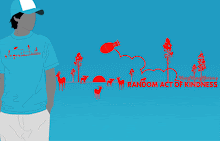Geographic information systems commonly known as GIS has become a rapidly growing technological field that allows Geomatics Specialists to solve and model real world situations by incorporating digital spatial and associated tabular data. It is often defined as a comprehensive computerized information system made up of hardware, specialized software, spatial data and people to help manipulate, analyze and present the information used for storing, manipulating and analyzing spatially indexed information.
GIS operates on many levels and over the past decade has become an essential tool for most urban and resource planning and management organizations. On the most basic level, GIS can be used for simple digital cartography, to create various types of maps. However the real power of GIS is through its abilities to use both spatial and statistical methods to analyze attribute and geographic information together. The end result of such an analysis can be vast amounts of derivative information, interpolated information or prioritized information. Geographic information systems commonly known as GIS has become a rapidly growing technological field that allows Geomatics Specialists to solve and model real world situations by incorporating digital spatial and associated tabular data. It is often defined as a comprehensive computerized information system made up of hardware, specialized software, spatial data and people to help manipulate, analyze and present the information used for storing, manipulating and analyzing spatially indexed information.
GIS operates on many levels and over the past decade has become an essential tool for most urban and resource planning and management organizations. On the most basic level, GIS can be used for simple digital cartography, to create various types of maps. However the real power of GIS is through its abilities to use both spatial and statistical methods to analyze attribute and geographic information together. The end result of such an analysis can be vast amounts of derivative information, interpolated information or prioritized information.
GIS technology can be used for scientific investigations, resource and utilities management, modeling, assessments,
development planning, cartography and route planning and many other applications.. Some of these and other aspects
of the GIS field are currently covered on this website including projects related to
spatial database modeling,
Geostatistical spatial modeling,
mobile mapping,
cartography, and
interactive web mapping.
Examples of GIS
MacKinnon E (2004)
Spatial GIS Vegetation Database and GIS Spatial Modeling at Kejimkujik National Park and Historic Site.
MacKinnon E (2003)
Mobile Mapping Application for Updating AGRG Weather Station data
MacKinnon E (2003)
Mobile Mapping Application - for Updating AGRG Weather Station data
MacKinnon E (2003)
Leica GS20 Professional Data Mapper - AGRG Users Guide
More related publications

Tidak ada komentar:
Posting Komentar